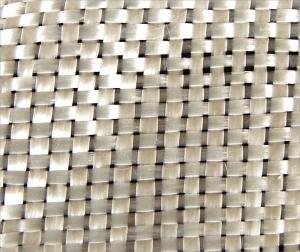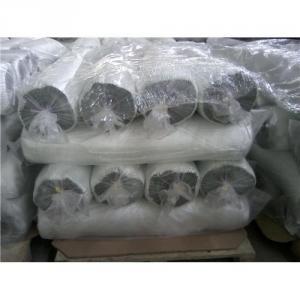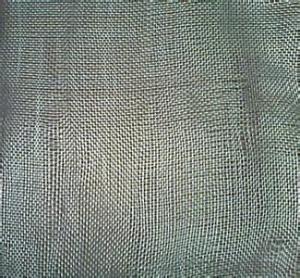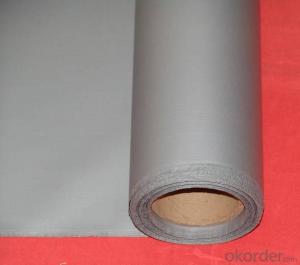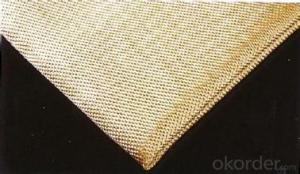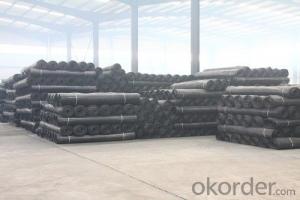EWR360-380G/M2
- Loading Port:
- China Main Port
- Payment Terms:
- TT or LC
- Min Order Qty:
- 10Ton kg
- Supply Capability:
- 100TON PER TON kg/month
OKorder Service Pledge
OKorder Financial Service
You Might Also Like
Specifications of EWR360-380G/M2
1.Weight:360-380g/m2
2.Width:90cm
3.Length:100meter/roll
4.Packing:Plastic bag + Plastic woven bag
Characteristics of EWR360-380G/M2
1.Low Fuzz,dirt,impurity and other stains.
2. Fast wet-out.
3. Even thickness
4.Good covering
5.Passed ISO9001,ISO14001
Application of EWR360-380G/M2
a) boats ,vessels ,plane
b) automotive parts ,furniture and sports facilities
c) resins system,such as polyeser,vinylester and epoxy resins
<IMG title=EWR360-380G/M2 alt=EWR360-380G/M2 src="https://file2.okorder.com/prod/2013/12/12/0fe9e6e5c192f505a80fe749302d42e4/97629bbe0f243153ffc9c620d481059c.jpg" _src="https://file2.okorder.com/prod/2013/12/12/0fe9e6e5c192f505a80fe749302d42e4/97629bbe0f243153ffc9c620d481059c.jpg">
<IMG title=EWR360-380G/M2 alt=EWR360-380G/M2 src="https://file2.okorder.com/prod/2013/12/12/9892a2f3166ed0d08f5f9768de96b58d/cfad0ded1db7312d1d8f171c98b6f1d8.jpg" _src="https://file2.okorder.com/prod/2013/12/12/9892a2f3166ed0d08f5f9768de96b58d/cfad0ded1db7312d1d8f171c98b6f1d8.jpg">
- Q:Can fiberglass fabric be laminated with other materials?
- Fiberglass fabric possesses the capability to be combined with other substances through lamination. Lamination entails the act of uniting two or more layers of material in order to produce a composite material that boasts heightened properties. Fiberglass fabric frequently functions as a reinforcing material within laminates, granting them strength and endurance. It is feasible to laminate fiberglass fabric with diverse materials, including resins, plastics, metals, and alternative fabrics, to generate composite structures that possess particular characteristics. The lamination process generally entails the application of an adhesive or resin layer onto the fiberglass fabric, followed by bonding it with the desired substance. This process allows for the creation of adaptable and customizable materials that can be employed across a broad range of industries, such as aerospace, automotive, construction, and marine.
- Q:Is fiberglass fabric resistant to flame spread?
- Yes, fiberglass fabric is resistant to flame spread.
- Q:How does fiberglass fabric handle static electricity?
- Fiberglass fabric is known for its excellent electrical insulation properties, which make it highly resistant to the effects of static electricity. The composition of fiberglass fabric, which is made up of fine glass fibers, offers a high level of electrical resistance. This resistance prevents the flow of electric current and reduces the buildup of static charges on the fabric's surface. Due to its insulating properties, fiberglass fabric does not readily conduct electricity. When static electricity is generated, such as through friction or contact with charged materials, fiberglass fabric does not allow the charge to flow through it. Instead, the charge remains localized on the fabric's surface, resulting in a minimal or non-existent discharge of static electricity. Moreover, fiberglass fabric has a low tendency to generate static charges itself. Unlike other materials that may create static electricity through friction, such as synthetic fabrics or plastics, fiberglass fabric has a relatively low triboelectric effect. This means that it is less likely to generate static charges when in contact with other objects. Overall, fiberglass fabric acts as an effective barrier against the effects of static electricity due to its high electrical resistance and low propensity for charge generation. It helps to prevent the accumulation and discharge of static charges, making it a suitable material for applications where electrostatic discharge (ESD) protection is required, such as in electronics manufacturing, cleanrooms, or environments with flammable substances.
- Q:Is fiberglass fabric suitable for making sports equipment bags?
- Yes, fiberglass fabric is suitable for making sports equipment bags. It is known for its durability, strength, and resistance to tearing, making it an ideal choice for bags that need to withstand heavy usage and potential impact. Additionally, fiberglass fabric is lightweight, which is advantageous for sports equipment bags that need to be carried around easily.
- Q:Are fiberglass fabrics resistant to water absorption?
- Fiberglass fabrics, in general, show resistance to water absorption. The non-porous nature of fiberglass prevents easy passage of water, making it highly resistant to water absorption. To enhance this resistance, fiberglass used in fabrics is often coated with a water-resistant finish or treated with chemicals. This quality makes fiberglass fabrics suitable for various applications that require water resistance, including outdoor clothing, marine equipment, and waterproofing materials. It is important to note, however, that although fiberglass fabrics resist water absorption, they may not be entirely waterproof. In extreme conditions, such as prolonged heavy rain or submersion in water, some water may eventually permeate through the fabric.
- Q:How does fiberglass fabric handle vibration?
- The exceptional performance of fiberglass fabric in managing vibration is well-known. Its unique composition and structure grant it inherent properties that render it highly resistant to vibration. A significant factor that contributes to its ability to handle vibrations is its remarkable tensile strength. The process of weaving strands of fiberglass together to create this fabric produces a material that is sturdy and enduring. This elevated tensile strength allows the fabric to endure the forces exerted by vibrations without experiencing any deformation or damage. Furthermore, fiberglass fabric possesses a low density, making it lightweight and boasting a high strength-to-weight ratio. This quality enables the fabric to effectively dissipate vibrations and absorb energy, thereby minimizing the transmission of vibrations to the surrounding environment. Moreover, fiberglass fabric is renowned for its extraordinary dimensional stability. It retains its shape and structure even when subjected to dynamic conditions, which is crucial in applications prone to vibrations. This stability guarantees the fabric's integrity and functionality, preventing any detrimental effects on the overall system's performance. In conclusion, fiberglass fabric is a reliable and efficient material for vibration management. Its high tensile strength, low density, and dimensional stability render it an ideal choice for numerous industries and applications where vibration control is imperative.
- Q:Can fiberglass fabrics be used for clothing or fashion purposes?
- Yes, fiberglass fabrics can be used for clothing or fashion purposes. However, they are less commonly used due to their properties like being non-breathable, stiff, and potentially irritating to the skin.
- Q:Are fiberglass fabrics suitable for use in the oil and gas industry?
- Fiberglass fabrics are indeed suitable for utilization in the oil and gas sector, offering numerous benefits that make them highly appropriate for diverse applications within this industry. To begin with, the resistance of fiberglass fabrics to corrosion and chemicals is exceptionally high, rendering them perfect for deployment in environments where exposure to oil, gas, and other corrosive substances is prevalent. This resistance ensures the longevity and durability of the fabric, minimizing the need for frequent replacements and maintenance. Furthermore, the thermal insulation properties of fiberglass fabrics are excellent, a crucial characteristic in the oil and gas industry, where encountering high temperatures is common. These fabrics have the capacity to endure extreme heat and safeguard equipment and personnel from thermal hazards. In addition, fiberglass fabrics possess remarkable traits of being lightweight, yet strong and flexible, simplifying their handling and installation. This feature proves particularly advantageous in applications that necessitate the creation of intricate shapes or structures, such as insulation jackets or protective covers. Moreover, fiberglass fabrics exhibit commendable electrical insulation properties, thereby reducing the risk of electrical hazards in oil and gas operations. They can serve as insulation materials for electrical equipment, cables, and pipelines, ensuring safe and dependable operations. Finally, fiberglass fabrics possess a high dielectric strength, enabling them to withstand high voltage and prevent electrical arcing. This quality holds exceptional importance in the oil and gas industry, where the potential for electrical accidents can be significant. To summarize, fiberglass fabrics are highly suitable for use in the oil and gas industry due to their corrosion resistance, thermal insulation properties, lightweight and flexible nature, electrical insulation capabilities, and high dielectric strength. These attributes establish them as dependable and efficient materials for a wide range of applications within this industry.
- Q:How does fiberglass fabric perform in wind and storm conditions?
- Fiberglass fabric is known for its exceptional performance in wind and storm conditions. Due to its strong and durable nature, fiberglass fabric is resistant to wind damage and can withstand high wind speeds. Its unique composition, which includes strands of glass fibers woven together, provides superior strength and stability, making it highly effective in withstanding the forces of strong winds and storms. One of the key advantages of fiberglass fabric in wind and storm conditions is its ability to retain its shape and structural integrity. Unlike other materials that may deform or collapse under heavy wind loads, fiberglass fabric remains rigid and stable, ensuring the integrity of structures or objects it is used to protect. Moreover, fiberglass fabric is highly resistant to moisture, making it an ideal choice for windy and stormy environments. It does not absorb water, preventing it from becoming heavy and losing its effectiveness. This feature also helps to prevent the growth of mold or mildew, which can further compromise the fabric's performance. Additionally, fiberglass fabric is fire-resistant, which is essential in storm conditions where the risk of fire is increased. This fire-retardant property adds an extra layer of safety, making it a preferred choice for applications where wind and storm conditions are expected. In summary, fiberglass fabric performs exceptionally well in wind and storm conditions. Its strength, stability, resistance to moisture, and fire-retardant properties make it an excellent choice for various applications, such as protective covers, building structures, and outdoor equipment, ensuring durability and safety even in the harshest weather conditions.
- Q:Are fiberglass fabrics suitable for use in aerospace applications?
- Yes, fiberglass fabrics are suitable for use in aerospace applications. Fiberglass is a lightweight and high-strength material, which makes it ideal for aerospace applications where weight reduction is crucial. It has excellent mechanical properties, including high tensile strength, stiffness, and resistance to temperature variations, which are important for withstanding the extreme conditions experienced in aerospace environments. Fiberglass fabrics also have good electrical insulation properties, making them suitable for applications where protection against electromagnetic interference is necessary. Additionally, fiberglass fabrics can be engineered to be fire-resistant, further enhancing their suitability for aerospace applications. Overall, the combination of lightweight, high strength, temperature resistance, electrical insulation, and fire resistance makes fiberglass fabrics a reliable and suitable choice for use in aerospace applications.
1. Manufacturer Overview |
|
|---|---|
| Location | Shanghai,China |
| Year Established | 2006 |
| Annual Output Value | Above US$20 Million |
| Main Markets | Mid East;Western Europe;North America:South American |
| Company Certifications | |
2. Manufacturer Certificates |
|
|---|---|
| a) Certification Name | |
| Range | |
| Reference | |
| Validity Period | |
3. Manufacturer Capability |
|
|---|---|
| a)Trade Capacity | |
| Nearest Port | Shanghai |
| Export Percentage | 70% |
| No.of Employees in Trade Department | 200 People |
| Language Spoken: | English;Chinese |
| b)Factory Information | |
| Factory Size: | Above 400,000 square meters |
| No. of Production Lines | Above 15 |
| Contract Manufacturing | Average |
| Product Price Range | OEM Service Offered;Design Service Offered |
Send your message to us
EWR360-380G/M2
- Loading Port:
- China Main Port
- Payment Terms:
- TT or LC
- Min Order Qty:
- 10Ton kg
- Supply Capability:
- 100TON PER TON kg/month
OKorder Service Pledge
OKorder Financial Service
Similar products
New products
Hot products
Related keywords

